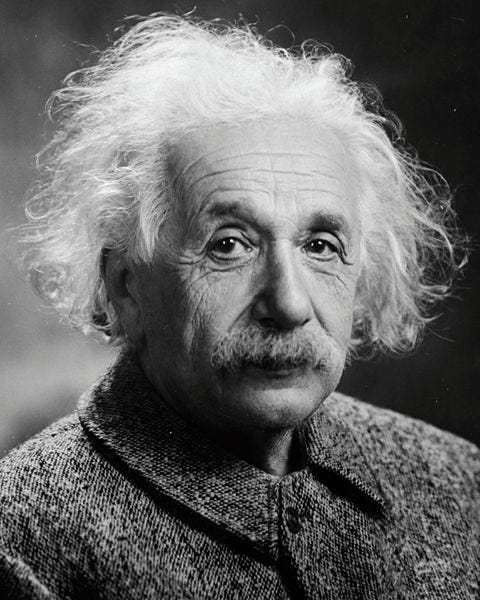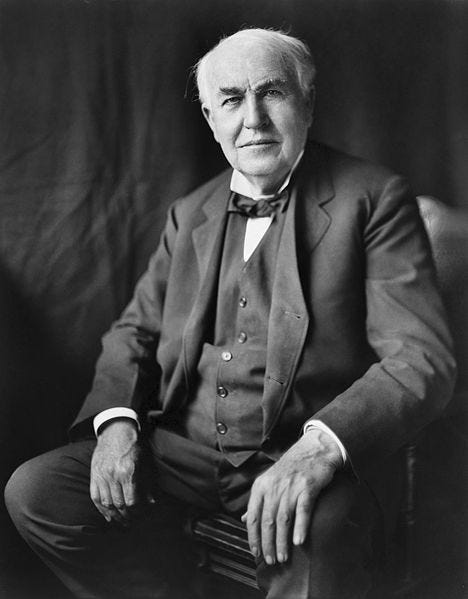Famous Body Parts: A Journey Through Infamous Remains
Written on
Chapter 1: A Peculiar Form of Legacy
The preservation of human remains for scientific study or as oddities raises ethical questions. After the passing of various notorious individuals, parts of their bodies were taken, often without consent, and became macabre souvenirs. This article delves into some of the most notorious examples, detailing what happened to these remains, if they can even be traced.

Section 1.1: The Case of Einstein’s Brain
Albert Einstein’s intellect marked him as one of the 20th century's most brilliant minds. After his death, pathologist Thomas Harvey removed his brain without consulting Einstein's family during the autopsy. Harvey's intent was to study the brain's cellular structure for scientific insights, and he even took Einstein's eyes for further examination.
Eventually, Dr. Harvey secured permission to retain the brain solely for research, yet he didn’t preserve it in the best conditions. For many years, Einstein’s brain was kept in a glass jar, sometimes stored in a cider box. While Harvey dissected it into 240 blocks and created numerous microscopic slides, the results of the studies have been intriguing but not definitive. Remarkably, Einstein’s brain was found to weigh less than the average male brain, yet certain regions exhibited significant differences that might explain his extraordinary cognitive abilities.

Section 1.2: The Curious Fate of Napoleon’s Penis
Napoléon Bonaparte's life ended in defeat, and after he passed away on May 5, 1821, a postmortem examination led to the removal of his penis by the attending physician. This act was documented by Napoleon's valet, noting that body parts were taken under the cover of distraction.
What happened next is a bizarre tale of ownership, with Napoleon's remains eventually making their way through various hands until they arrived at a urologist's collection in New York. Despite its dubious condition, it has garnered attention, with some comparing it unfavorably to a "maltreated strip of buckskin shoelace."

Chapter 2: Infamous Remains of History
The video titled "Historical Figures Body Parts Stolen? JFK & Einstein's Brain, Napoleon's Penis + Kendall's BACK!" dives into the unsettling tales of historical figures whose remains have been exploited for various reasons. It explores the ethical implications and the curiosity surrounding these cases, offering viewers a deeper understanding of the topic.
Section 2.1: The Tragic Tale of Mata Hari’s Head
Mata Hari, whose real name was Margaretha Zelle, faced execution during World War I, accused of espionage. After her death, her head was preserved among other notorious figures in a Paris museum. However, it mysteriously vanished in 2000, leaving its current whereabouts unknown.

Section 2.2: The Legacy of Beethoven’s Skull
In the 19th century, scientists exhumed the remains of Beethoven for phrenological studies. A professor later obtained fragments of Beethoven’s skull, leading to speculation about its authenticity. The owner hopes to sell it for a substantial sum, but its rightful place remains a topic of debate among historians.

Section 2.3: Galileo’s Displaced Digit
Galileo Galilei’s middle finger was removed during a mausoleum relocation nearly a century after his death. This finger now resides at a museum, a curious artifact among scientific instruments, highlighting the strange fate of this great thinker’s remains.

Section 2.4: Edison’s Last Test Tube
The final item on this peculiar list is Thomas Edison’s last breath, preserved in a test tube. This symbolic memento was sealed immediately after his passing, raising questions about the nature of such preservation and the significance of what remains after someone’s death.
